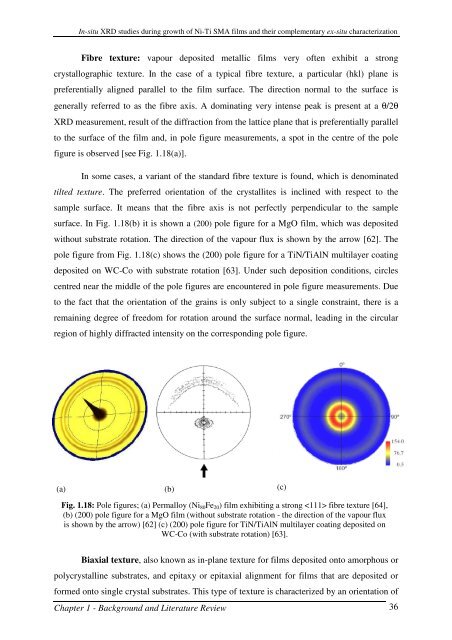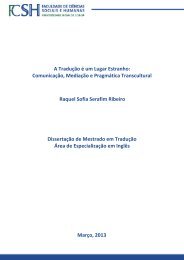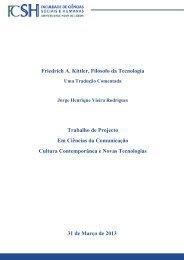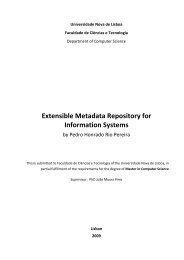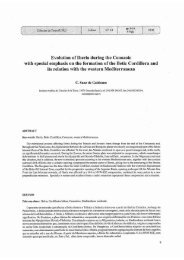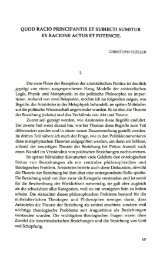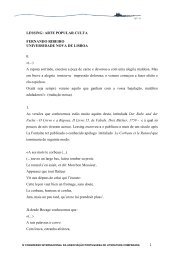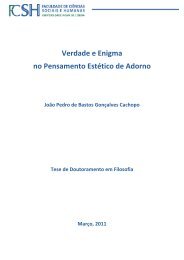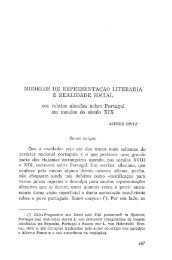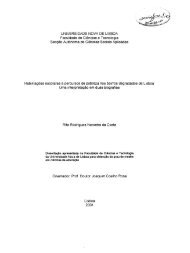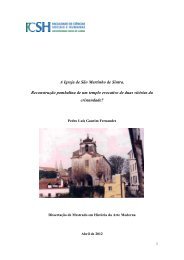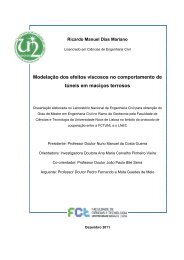PhD Thesis_RuiMSMartins.pdf - RUN UNL
PhD Thesis_RuiMSMartins.pdf - RUN UNL
PhD Thesis_RuiMSMartins.pdf - RUN UNL
Create successful ePaper yourself
Turn your PDF publications into a flip-book with our unique Google optimized e-Paper software.
In-situ XRD studies during growth of Ni-Ti SMA films and their complementary ex-situ characterization<br />
Fibre texture: vapour deposited metallic films very often exhibit a strong<br />
crystallographic texture. In the case of a typical fibre texture, a particular (hkl) plane is<br />
preferentially aligned parallel to the film surface. The direction normal to the surface is<br />
generally referred to as the fibre axis. A dominating very intense peak is present at a θ/2θ<br />
XRD measurement, result of the diffraction from the lattice plane that is preferentially parallel<br />
to the surface of the film and, in pole figure measurements, a spot in the centre of the pole<br />
figure is observed [see Fig. 1.18(a)].<br />
In some cases, a variant of the standard fibre texture is found, which is denominated<br />
tilted texture. The preferred orientation of the crystallites is inclined with respect to the<br />
sample surface. It means that the fibre axis is not perfectly perpendicular to the sample<br />
surface. In Fig. 1.18(b) it is shown a (200) pole figure for a MgO film, which was deposited<br />
without substrate rotation. The direction of the vapour flux is shown by the arrow [62]. The<br />
pole figure from Fig. 1.18(c) shows the (200) pole figure for a TiN/TiAlN multilayer coating<br />
deposited on WC-Co with substrate rotation [63]. Under such deposition conditions, circles<br />
centred near the middle of the pole figures are encountered in pole figure measurements. Due<br />
to the fact that the orientation of the grains is only subject to a single constraint, there is a<br />
remaining degree of freedom for rotation around the surface normal, leading in the circular<br />
region of highly diffracted intensity on the corresponding pole figure.<br />
(a)<br />
(b)<br />
(c)<br />
Fig. 1.18: Pole figures; (a) Permalloy (Ni 80 Fe 20 ) film exhibiting a strong fibre texture [64],<br />
(b) (200) pole figure for a MgO film (without substrate rotation - the direction of the vapour flux<br />
is shown by the arrow) [62] (c) (200) pole figure for TiN/TiAlN multilayer coating deposited on<br />
WC-Co (with substrate rotation) [63].<br />
Biaxial texture, also known as in-plane texture for films deposited onto amorphous or<br />
polycrystalline substrates, and epitaxy or epitaxial alignment for films that are deposited or<br />
formed onto single crystal substrates. This type of texture is characterized by an orientation of<br />
Chapter 1 - Background and Literature Review 36


